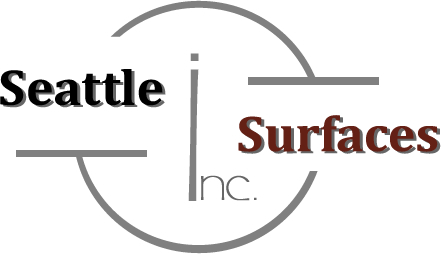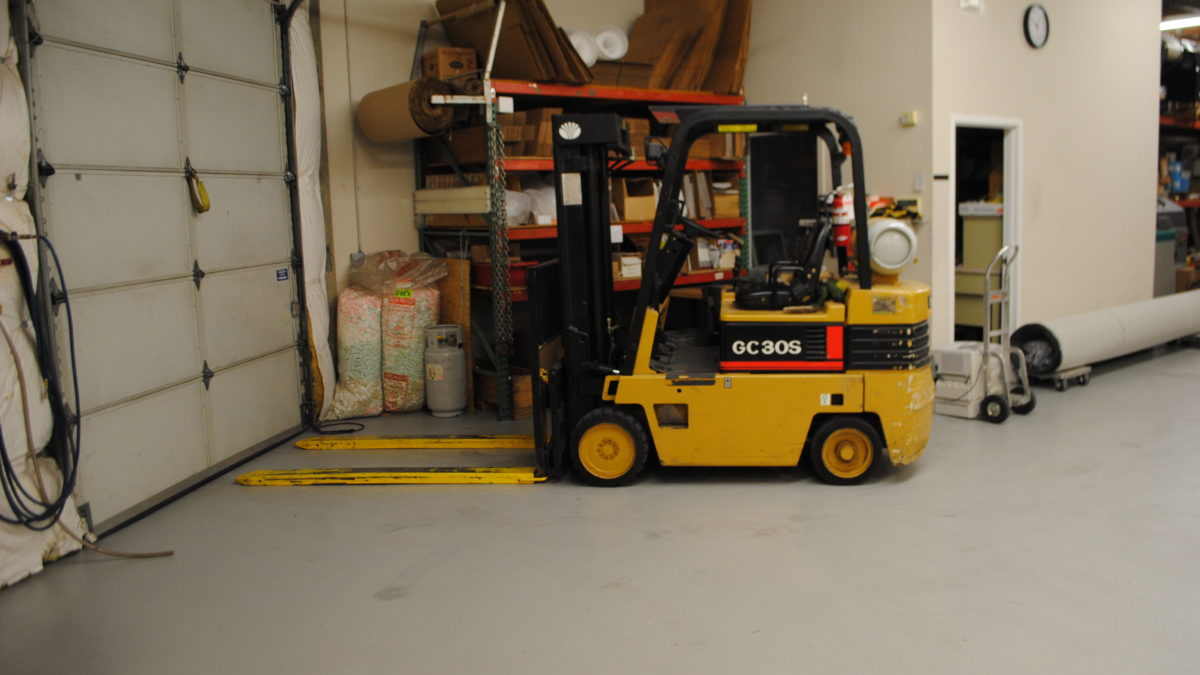How to Choose the Best Flooring for Your Loading Dock
A loading dock can be one of the harshest environments for flooring in a commercial or industrial facility. When you think about it, just about everything, whether its raw materials or a large piece of equipment, most likely passes through a loading dock. The constant flow of a goods is usually accompanied by an often around the clock flow of forklifts, dolly traffic, truck drivers and dock workers who load and unload the shipments. As if that weren’t enough, there are usually large bay doors that remain open. This can create thermal stress due to the temperature variance from inside to outside. Extremely cold environments regularly use salt or de-icing agents which get brought in onto the floor surface. Pallets can break, shipments can spill, and occasionally equipment can break and leak on the floor. There really isn’t a surface regularly subjected to more abuse.
The floors in these types of spaces are almost always constructed with concrete. It is cost effective and durable. The problem is concrete is not indestructible. The factors mentioned above can often lead to surface spalls, pitting, cracks, and unevenness. If left unaddressed, this type of damage can lead to costly repairs on equipment, downtime, and can even result in injuries to workers and possible legal action.
There are several factors to consider when choosing a floor system that will perform in a loading dock. The local weather conditions might just be the most important. You need a good understanding the temperature cycles that are present. You also have to know the differential in humidity inside versus outside the building. This insures the floor system can withstand the thermal stresses present over time as well as during the install process. Not understanding these conditions can result in a bonding failure at the point of install. It can also lead to a bonding failure over time that has nothing to do with surface wear.
Part of choosing the right floor system is considering surface moisture and slip-resistance. Extremely wet climates like Seattle will have constantly wet floors. If not addressed properly, these will pose a risk of slips and falls. According to the Bureau of Labor Statistics, the types of accidents account for 15 percent of all lost-time, with a disproportionately high number of these injuries occurring at the loading dock.
Another important factor to consider is the type of material that will regularly move through the space. It is a simple fact that no matter how careful workers are, accidents will happen resulting in broken containers, spills and leaks. The most common materials moving through the loading dock will make their way on the floor surface. If your facility deals in materials that are extremely acidic or alkali, or with other harsh chemicals, these can not only damage bare concrete over time, but can ruin a floor coating that isn’t suitable to deal with them. A floor coating designed with these in mind can make dealing with spills and leaks as simple as wiping them up.
The two most common types of floor systems used in loading docks are urethane cements and epoxy broadcast floors. Both are installed with an extremely hard aggregate that adds to the durability. Because urethane cements have a closer thermal coefficient to concrete, (they expand and contract at a closer rate as temperatures change) they handle thermal shock better, and are therefore the better choice for areas with high temperature swings. The downside is that they are quite a bit more expensive. Usually, loading docks are not high on the list for expensive upgrades. When considering coatings where thermal shock is a concern, the higher initial investment will pay off in a surface the withstands the environment and performs well without the costly need for removal and replacement.
If thermal shock isn’t a concern, epoxy broadcast floors are often an effective alternative. Epoxies can tenaciously bond to a properly prepared concrete substrate. When a broadcast aggregate is added, they offer a slip resistant surface that is abrasion resistant, and like urethane cements requires little maintenance over time. Both systems can be colored for aesthetics, corporate branding, or to highlight traffic flow for safety.
Choosing the right flooring system for your loading dock can save you time, productivity, and worries for years to come. Contact us today for you free consultation.
Tags In
Related Posts
Categories
- Acid Etch (2)
- Acid Stains (1)
- Acrylic (1)
- Basement Flooring (5)
- Broomed Overlay (1)
- Commercial Flooring (15)
- Commercial Kitchens (4)
- Concrete Dyes (5)
- Concrete Resurfacing (17)
- Decorative Concrete (16)
- Decorative Concrete Coatings (16)
- Designer Epoxy Flooring (5)
- DIY Epoxy Kits (3)
- Embedded Logos (2)
- Epoxy (15)
- Epoxy Broadcast Floors (1)
- Epoxy Coatings (7)
- Epoxy Flooring (6)
- Epoxy Floors (6)
- Epoxy Mositure Barrier (4)
- Epoxy Paint (4)
- Featured Post (6)
- Flexible Epoxy (1)
- Fluid Applied Floors (3)
- Food Processing (2)
- Garage Floor Coatings (7)
- Hand Troweled Floors (1)
- Hot Tire Pick Up (2)
- Integral Cove Base (1)
- Loading Docks (1)
- Metallic Epoxy (5)
- Metallic Marble Stains (2)
- Micro-toppings (10)
- Moisture Mitigation (2)
- Plywood Sub-Floors (1)
- Polyaspartic (9)
- Polyurethane (7)
- Seamless Floors (13)
- Spray-on Overlay (1)
- Stained Concrete (5)
- Stamped Concrete (4)
- Stencils (3)
- Thermal Shock (1)
- Uncategorized (3)
- Urethane Cement (3)
- Water Damage (1)
- Waterproof Concrete Decking (1)

